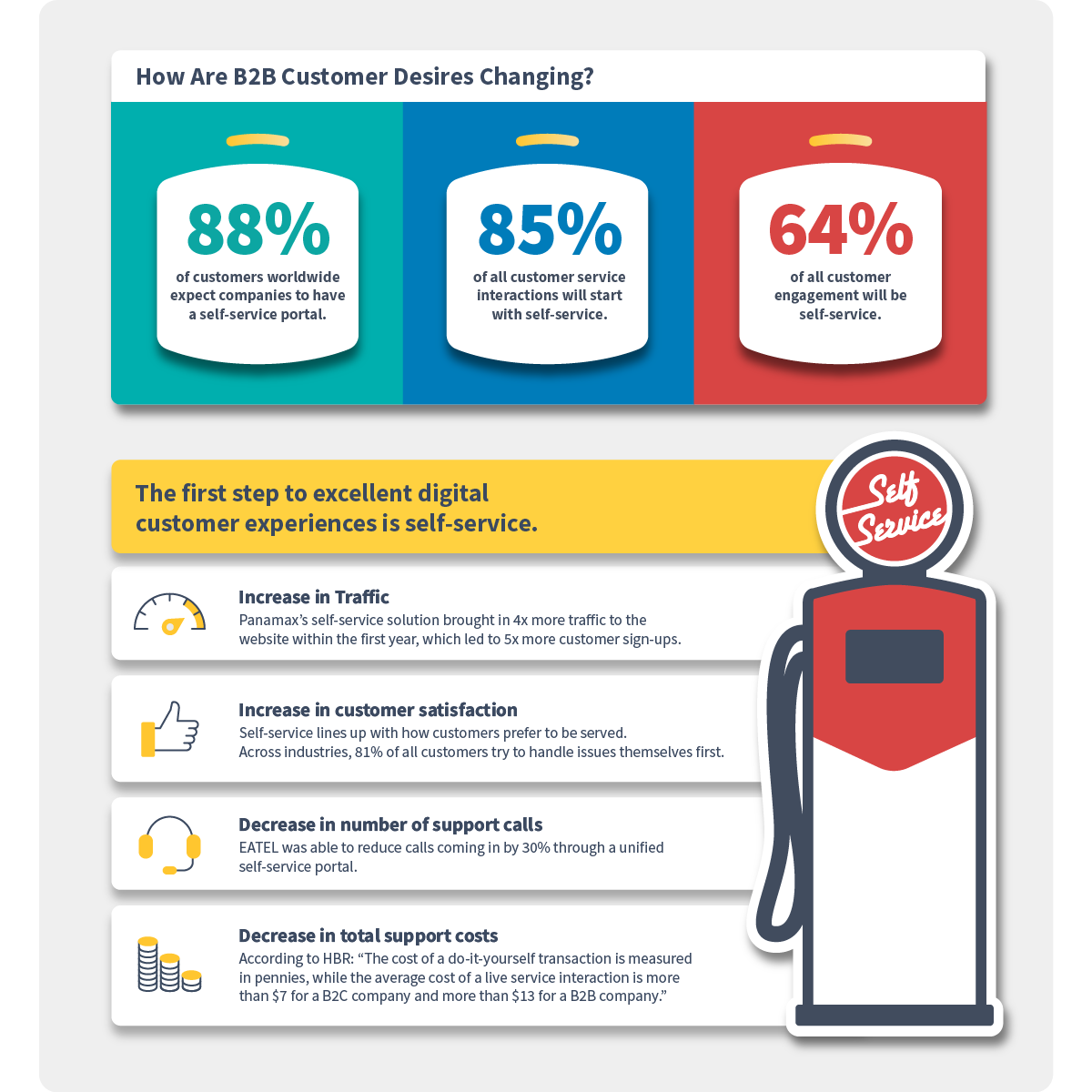What is Digital Self-Service?
Digital self-service or self-service is the overarching term for customer service tactics that empower users to independently resolve issues or answer questions through digital channels. (Think chatbots, FAQs, or knowledge bases.)
Self-service is being adopted widely across industries, countries, and business units. In a press release by Gartner, the analyst firm says that “self-service is becoming the norm as customers increasingly expect an effortless experience at scale.” They predict that by 2022, 85% of customer service interactions will start with self-service (for more details, see the full press release here).
What are the Benefits of Self-Service?
What is a Self-Service Customer Portal?
While self-service can be delivered through many different channels such as chatbots, FAQs, or video tutorials, these tactics initiated individually generally require different systems which can quickly become disjointed and difficult to manage. A self-service customer portal is a single, unified location that provides access to all digital self-service features.
Examples of Self-Service Customer Portals
Self-service can be leveraged for employees and partners, but many businesses use self-service to provide value to their customers through a self-service customer portal.
For example, EATEL, a telecom company, modernized their customer experience by building a responsive self-service customer portal to support its residential and business customers. The portal provides better self-service options in a single location and serves as a better marketing and customer communication center. With self-service, Eatel cuts calls about payment by 30%.
By providing self-service options, like a chatbot, customers are able to access the information they need without needing to contact live representatives. Blue Diamond, a grower and manufacturer of almond products, provides a chatbot on their website that allows customers to select from a list of topics based on products they are interested in. This enables Blue Diamond to provide answers directly within the chat instead of redirecting customers to a page.
In other industries like insurance, self-service can be used to help policyholders submit claims more efficiently. West Bend Mutual Insurance not only allows policyholders to manage claims online through self-service, but also provides payment information and ID cards through their insured portal. This easy access to information helps reduce costs and calls to the support center.
For additional examples, check out these 15 Awesome Customer Portals.

